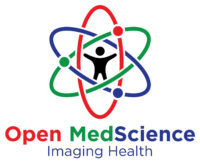Cities with aging populations need a lot of facilities for their elderly crowds. Be it housing or nutrition, these cities, in particular, require special attention.
The biggest cities in the US saw their 65-and-up population grow from 2020 to 2023. These cities also had to provide their elderly crowd with proper housing, food, and transportation. However, the most important must-have facility in a city with an aging population is proper healthcare.
Cities must have certain treatment facilities to cater to their elderly population and ensure their overall well-being. Here are four such treatments that every city with an aging population needs to have.
#1 Platelet-Rich Plasma (PRP) Treatment
PRP injections are quietly changing lives, especially for older adults dealing with nagging pain or slow-healing injuries. PRP is a fascinating approach that uses the patient’s own blood to promote healing. Sounds wild, right? But it works.
According to Phoenix Integrated Medical Center, in this procedure, a bit of blood is drawn and spun in a centrifuge to separate the platelets. These platelets, which are super rich in growth factors, are then injected into the area that needs help. This may be a knee that’s been aching for years or a shoulder that never quite recovered from an old injury.
Cities with rapidly aging populations should absolutely be offering PRP treatment in local clinics.
For instance, places like Orlando and Miami in Florida are aging the fastest. Thus comes the need for clinics that provide PRP treatment in Orlando, Florida, and any other city with a rapidly aging population. After all, as per one study, PRP is mostly recommended for patients aged between 50 and 65 years. These PRP injections are designed to kick-start the healing process, helping tissue repair itself more efficiently.
People often report accelerated healing compared to traditional methods, and it’s especially helpful for soft tissue injuries like tendonitis or muscle tears.
#2 Physical Therapy
You might think of physical therapy as something you do after you’ve had surgery or a fall. But for aging folks, it should be just the opposite.
In a city with many seniors, proactive physical therapy can make all the difference. Think of it as ongoing maintenance for your muscles and joints, kind of like tuning up a car before it breaks down.
Many older adults struggle with mobility issues, balance, and chronic stiffness. Cities shouldn’t be waiting until someone slips on a curb and ends up in the ER. Instead, they should offer therapy sessions geared toward strengthening muscles and improving coordination ahead of time.
It’s about giving older residents the physical resilience they need to keep walking, driving, and living independently. Even seniors in their 70s or 80s can see improvement in strength and flexibility with consistent guidance from trained professionals.
#3 Cognitive Behavioral Therapy
We don’t talk enough about how aging impacts mental health. Loneliness, fear, anxiety, depression, grief, etc. are all heavy issues that older adults quietly carry. And while medication plays a role in managing depression or anxiety, therapy is just as vital.
Cognitive behavioral therapy (CBT) is a practical, goal-oriented approach that helps people change negative thinking patterns. It’s especially effective for seniors who may feel stuck or overwhelmed.
Offering accessible CBT services in a city means seniors don’t have to suffer in silence. They can learn how to better manage emotional stress, adapt to life changes, and regain a sense of purpose.
When a city makes room for this kind of emotional support, it’s not just improving individual lives. It’s fostering a healthier, more connected community.
#4 Nutritional Counseling
Nutrition is often overlooked when it comes to senior healthcare. But as people age, their dietary needs shift, metabolism slows, bone density decreases, and some nutrients become harder to absorb.
Offering proper nutritional counseling isn’t about trendy diets or cutting carbs. It’s about ensuring older adults are getting what their bodies genuinely need to stay strong, think clearly, and avoid preventable illnesses.
Cities need to prioritize nutritional counseling that’s specifically designed for older adults. That means advice from registered dietitians who understand the aging body, not just generic tips from the internet.
From managing diabetes to improving heart health, the right dietary guidance can lead to major improvements in quality of life.
The truth is, aging is inevitable but how we age can look dramatically different depending on the care we receive. Cities that want to support their older residents need to do more than just increase hospital beds or add senior centers. They need to offer treatments that meet the evolving physical and emotional needs of aging bodies and minds.
If we build cities that take care of their seniors, we’re building cities that take care of all of us. Because sooner or later, we’re all going to need a little extra support too.
Disclaimer
The content provided in this article is for informational purposes only and is not intended to serve as medical advice, diagnosis, or treatment. The treatments discussed, including Platelet-Rich Plasma (PRP) therapy, physical therapy, cognitive behavioural therapy, and nutritional counselling, should not be interpreted as universally appropriate or effective for every individual. Readers are advised to consult with qualified healthcare professionals before starting or altering any treatment plan. Open Medscience does not endorse any specific clinic or provider mentioned and assumes no responsibility for decisions made based on this article. Availability of services may vary by city and region.




